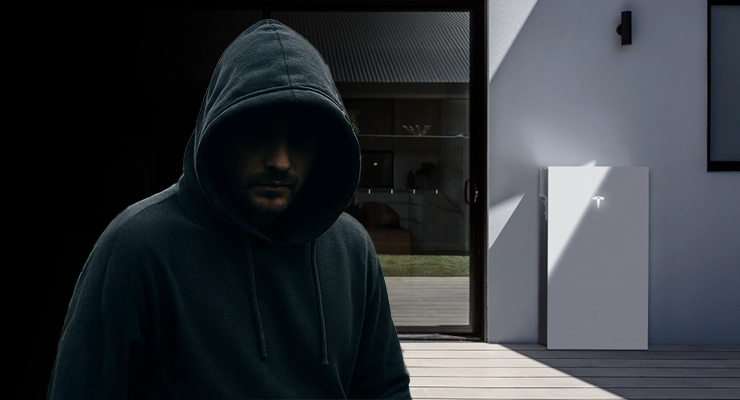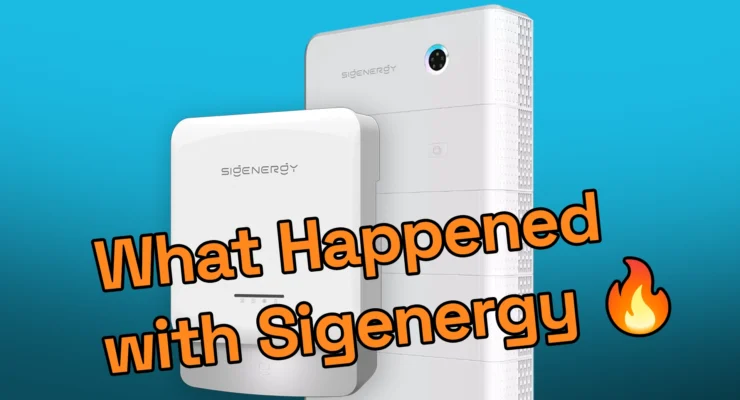Fast read
Yes, any internet-connected device, including modern battery and inverter systems, carries cybersecurity risks. For Australian homeowners, these risks range from unauthorised access to your personal data to, in rare cases, remote manipulation of your system's operation. The core issue lies with the inverter, which connects your solar and battery to the internet, but risks are managed through secure product selection, professional installation, and simple home network security practices.
What are the cybersecurity risks of connected battery systems?
As Australian homes increasingly adopt smart energy technology, the benefits of connected solar batteries—like remote monitoring and participation in Virtual Power Plants (VPPs)—are clear. However, connecting these essential systems to the internet inevitably raises important questions about cybersecurity.
It’s a valid concern. You’re not just connecting a gadget; you’re connecting a critical piece of your home’s infrastructure. Understanding the potential risks and, more importantly, the robust measures in place to protect you, is key to making a confident decision.
The inverter: Your system’s brain and digital doorway
The heart of your connected battery system’s security lies with the inverter. The inverter is the intelligent device that manages the flow of electricity between your solar panels, your battery, and the grid. It’s also the component that connects to your home Wi-Fi network, allowing you to monitor performance on your smartphone. This enables installers to perform remote diagnostics.
Because the inverter acts as the digital gateway, it’s the primary focus for cybersecurity threats. The risks, while often low for an individual home, are taken seriously by manufacturers and the broader Australian energy sector.
What are the real-world risks for a homeowner?
While news reports sometimes focus on large-scale threats to national energy grids, the risks for an individual homeowner are more specific. It’s important to separate theoretical possibilities from practical realities.
- Unauthorised Data Access: The most common risk for any smart device is data privacy. Your energy system generates data on your electricity consumption patterns—when you use the most power, when you are away, and when you export to the grid. In the wrong hands, this information could be used to understand when your home is unoccupied.
- System Disruption: A malicious actor could theoretically gain access to an insecure system and disrupt its normal function. This could involve remotely shutting the system down, preventing your battery from charging or discharging, or altering settings that affect its efficiency. This is more of a nuisance than a danger, but a significant inconvenience nonetheless.
- Physical Damage (A very low risk): There are concerns that a hacker could manipulate a battery’s charging parameters to cause overheating or damage. However, modern Battery Management Systems (BMS) have multiple layers of built-in hardware and software protection to prevent this, making such an event extremely unlikely in a quality, certified system.
The bigger picture: Securing Australia’s energy grid
While individual risks are a key concern, much of the industry focus is on the collective security of Australia’s power grid. As hundreds of thousands of homes connect batteries, they form a network of Distributed Energy Resources (DER).
Government and industry bodies are actively working to ensure that this decentralised grid is secure from large-scale, coordinated attacks that could potentially cause grid instability. This has led to a significant focus on the security of the components, like inverters, that make up these systems.
Concerns have been raised about foreign-manufactured components that may have hidden “backdoors” or undocumented communication channels, which could theoretically be exploited. This has prompted calls for stronger cybersecurity standards and certification for all smart energy devices sold in Australia.
How manufacturers and the government are protecting you
Thankfully, you are not alone in managing these risks. A multi-layered approach to security is being implemented from the factory to your home.
- Secure Product Design: Reputable manufacturers build security into their products from the ground up. This includes data encryption, secure firmware update processes, and removing common vulnerabilities like universal default passwords. For example, a manufacturer like Sungrow, known for its robust hybrid inverters, invests heavily in firmware security to protect the device’s core operations.
- Australian Standards: The Australian government and standards bodies are actively developing and implementing cybersecurity standards for smart energy devices. Coming into effect in 2026, these rules will mandate baseline security features for all consumer smart devices, including unique passwords and clear information on security update support periods. The ‘Common Smart Inverter Profile’ (CSIP-Aus) also standardises how these devices communicate securely with the grid.
- Installer Best Practices: Your accredited installer is your first line of defence. They securely set up your system by properly connecting it to your home network, changing any default credentials, and installing the latest secure firmware.
Questions to ask your installer for peace of mind
Empower yourself by being part of the process. When discussing a new battery system with a potential installer, ask these simple but important questions:
- How do you ensure my system is set up securely on my home network?
- What is the manufacturer’s process for providing security updates to the inverter?
- Will you change all default passwords during installation?
- Do you recommend isolating the energy system on a separate guest Wi-Fi network?
Your role: Simple steps for a secure system
Once your system is installed, a few simple cybersecurity habits can make a huge difference:
- Secure your Wi-Fi: Ensure your home Wi-Fi network is protected with a strong, unique password. This is the single most important step you can take.
- Use Strong Passwords: If your monitoring portal or app requires a password, use a unique and complex one.
- Accept Software Updates: Just like your phone or computer, your inverter and battery system will receive software updates. These often contain vital security patches. Always accept them promptly.
Choose reputable, certified products and work with accredited professionals to actively manage the cybersecurity risks of your connected battery system. This way, you can enjoy the full benefits of your smart energy investment with confidence.




